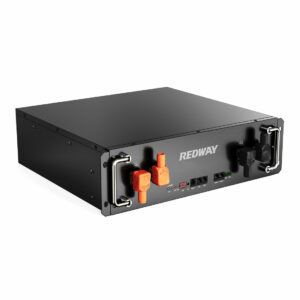How long will a 150W solar panel take to charge a 100Ah battery?
A 150W solar panel typically takes 10–16 hours to fully charge a 12V 100Ah battery under ideal conditions (direct sunlight, 25°C ambient temperature). Real-world factors like solar irradiance fluctuations, charge controller efficiency (80–95%), and battery depth of discharge (DoD) extend this to 2–4 days in moderate climates. For example, a 50% discharged 100Ah battery stores 600Wh (12V × 50Ah), requiring 600Wh ÷ (150W × 0.85 efficiency) = 4.7 peak sun hours.
How does solar panel wattage affect charging speed?
Solar wattage directly determines energy input—a 150W panel delivers 150Wh/hour under optimal light. However, voltage matching with the battery bank is critical. Pro Tip: Use MPPT controllers instead of PWM to harvest 30% more energy from variable light conditions. For instance, a 150W panel charging a 12V system provides ~10.4A (150W ÷ 14.4V absorption voltage), while a 24V system halves current to ~5.2A.

Beyond basic calculations, temperature derating reduces output by 0.3–0.5%/°C above 25°C. A 150W panel at 35°C effectively becomes 142W (150W × [1 − 0.004 × 10]). Transitional factors like morning/evening low-light periods further decrease daily yield. Practically speaking, in Arizona’s summer (6 peak hours), a 150W system replenishes 150W × 6h × 0.85 = 765Wh daily—enough to recharge a 50% depleted 100Ah battery (600Wh) in one day. Contrastingly, in Germany’s winter (1.5 peak hours), this stretches to 4 days.
| Factor | 150W Impact | 300W Impact |
|---|---|---|
| Peak Sun Hours | 4.7h for 600Wh | 2.35h |
| Cloudy Days | +200% time | +150% time |
Why does battery voltage matter for solar charging?
Battery voltage dictates system compatibility—a 12V battery needs 14–18V panel input, while 24V systems require 28–36V. Mismatched voltages cause incomplete charging or controller damage. For example, attempting to charge a 24V battery with 12V panels would fail to reach the 28.8V absorption voltage threshold, leaving cells at 60% state of charge (SoC).
Deep-cycle lead-acid batteries need 14.4–14.8V absorption, while lithium variants require 14.6V. But what happens if voltage isn’t maintained? Lead-acid batteries develop sulfation below 13.8V, permanently losing capacity. Transitioning to lithium, their BMS will disconnect if voltage exceeds 14.6V, halting charging. A real-world analogy: Trying to fill a pool with a narrow hose (low voltage) versus a firehose (matched voltage)—the latter completes the job faster without spillage.
RackBattery Expert Insight
FAQs
Can I parallel multiple 150W panels for faster charging?
Yes—two 150W panels in parallel yield 300W, halving charge time. Ensure controllers handle combined current (25A for 12V systems). Use 10AWG wiring to minimize losses.
Do cloudy days completely stop charging?
No—150W panels still produce 10–25% power in overcast conditions. A 100W harvest becomes 10–25W, extending charge timelines proportionally.



